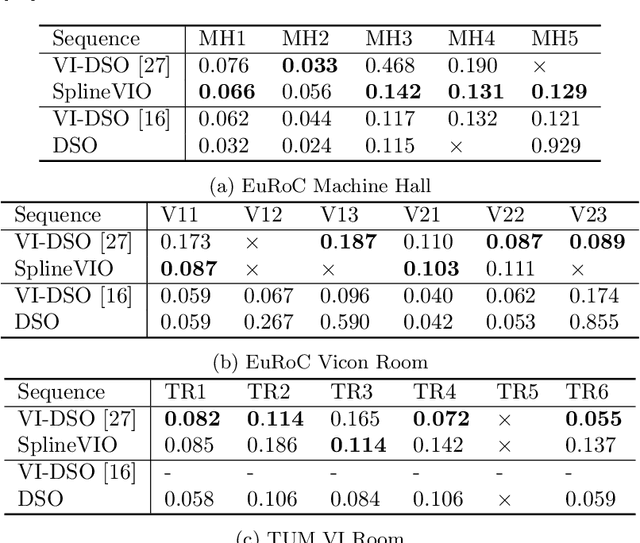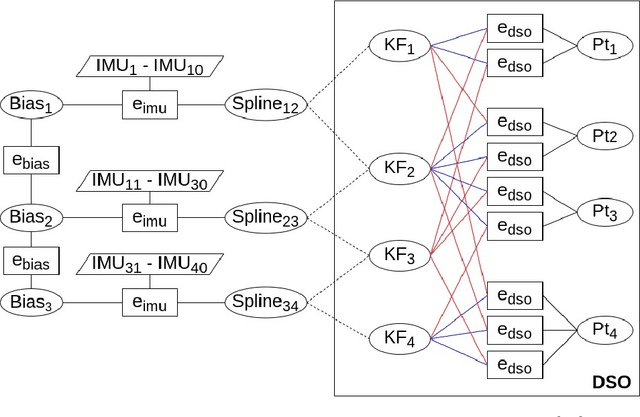Continuous-Time Spline Visual-Inertial Odometry
Paper and Code
Sep 19, 2021



We propose a continuous-time spline-based formulation for visual-inertial odometry (VIO). Specifically, we model the poses as a cubic spline, whose temporal derivatives are used to synthesize linear acceleration and angular velocity, which are compared to the measurements from the inertial measurement unit (IMU) for optimal state estimation. The spline boundary conditions create constraints between the camera and the IMU, with which we formulate VIO as a constrained nonlinear optimization problem. Continuous-time pose representation makes it possible to address many VIO challenges, e.g., rolling shutter distortion and sensors that may lack synchronization. We conduct experiments on two publicly available datasets that demonstrate the state-of-the-art accuracy and real-time computational efficiency of our method.
 Add to Chrome
Add to Chrome Add to Firefox
Add to Firefox Add to Edge
Add to Edge